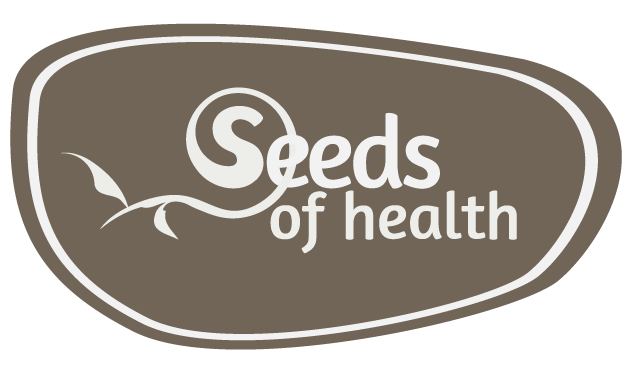Hello fellow hikers,
A friend and I recently completed a 4 day hike in Western Australia from Cape Leuwin to Gracetown – part of the Cape to Cape track, near Margaret River. We needed to carry all our own water, food, clothes, tent, etc. So therefore we had to be very conscious of weight.
I have done many multi day hikes over the years, with some of them being 13 days long, however my food choices have changed a lot since my first multi day hike back in 2006. I really enjoy doing multi day hikes and each time I complete one I learn a little more.
This hike I decided to focus more on which whole foods I could take with me that were light, clean and nutrient dense. Chia seeds became a major part of both breakfast and lunch, with the benefits of this seed outlined below.
These were my food choices on my most recent hike. I had more than enough, however we did plan on a 5 day hike so I had extra tucker.
Breakfast – Home made muesli consisting of oats, rice bran, chia seeds, almonds, walnuts, coconut, goji berries, cacao nibs and chopped dried apricots (the brown ones without preservative 220 on them). I had this soaked in either hot or cold water of a morning and a squeeze of honey could be added on top. This was so incredibly filling it kept me going for hours as we hiked over sand, rocky cliffs, through forests and up hills. I measured each daily amount out into zip lock bags to ensure I had enough for the week.
Lunch – Chia porridge consisting of chia seeds, coconut, pecans and chopped dates. This is incredibly light prior to adding water so a fantastic hiking food. This could be heated up with warm water when the weather is cold or otherwise cold water. A squeeze of honey is optional. I would like to add more flavour to this dish for my next hike (perhaps cacao and maca powder), however the energy gain from these little seeds is sensational!
Dinner – I tend to favour dahl on long hikes as it’s highly nutritious and light and so tasty with the right mix of spices. I choose to use red lentils as they cook quickly and also absorb the flavours of spices well. A great accompaniment is quinoa as it cooks faster than brown or white rice, therefore saving on gas or wood, and is more nutritious with a better balance of protein to carbohydrates. This ratio helps to repair muscles after hiking all day. Recently on my hike I also discovered another dish that is a winner – butter bean and sweet potato curry served with cous cous. The butter beans can be pre cooked and then dehydrated or otherwise a can of organic butter beans placed in a vaccum sealed bag and eaten on the first night is fine. Onions, garlic and fresh ginger are a great base for both of these dishes. It can be pre cut and dehydrated, however if room allows it’s great to be able to cut the onions, garlic and ginger fresh and cook them in some coconut oil and let the aroma spread through the camp as everyone’s appetite grows after a long day of hiking. A spice mix that I enjoy using is turmeric, cumin, mustard seeds, sea salt (plus onion, garlic and ginger above) and I’m sure there are a few others, which I’ve forgotten. Be creative!
Snacks – Bliss balls (containing chia seeds) are fantastic as they are light, full of flavour and nutrient dense. I tend to put a lot of cacao powder in mine to ensure a good energy source and a high amount of antioxidants. I ended up going to Paleo café with friends prior to flying to WA so I picked up a lemon myrtle raw food bar and lemon and macadamia slice. I also carried some wheatgrass powder with me and some activated almonds and extra dried apricots. This was more than enough. The wheatgrass powder I feel is essential as it gives the body an alkaline source, as it’s hard to get greens when out on the track. Dehydrated bananas were another delicious and energy rich snack. Next time bananas are cheap buy a heap and dehydrate them if you can. Then vacuum seal them and they’ll store really well for long periods, ready for your next hike.
Despite the number of superfood choices I would like to highlight the benefits of chia for multi day hikes. This seed has the ability to absorb 9-12 times its weight in water. This means that chia increases hydration in the body, leading to less fatigue and muscle cramping. Chia also decreases recovery time and fatigue due to its high amount of omega 3 fatty acids and antioxidants. Both of these reduce inflammation, which speeds up recovery. Its high potassium and moisture retaining qualities helps protect against electrolyte loss which can lead to cramping. The Tarahumara people of southwest Mexico would roast the seed and crush it before adding it to water to make a ‘sports gel’ which they would consume prior to long distance running. Coates, W. (2012). Chia – The complete guide to the ultimate superfood.
I would love to hear your ideas or questions surrounding hiking foods. It’s a fantastic idea to learn from each other. Please share your comments below, email me or post a comment on my Facebook page – Seeds Of Health.
Happy hiking!
Janelle


